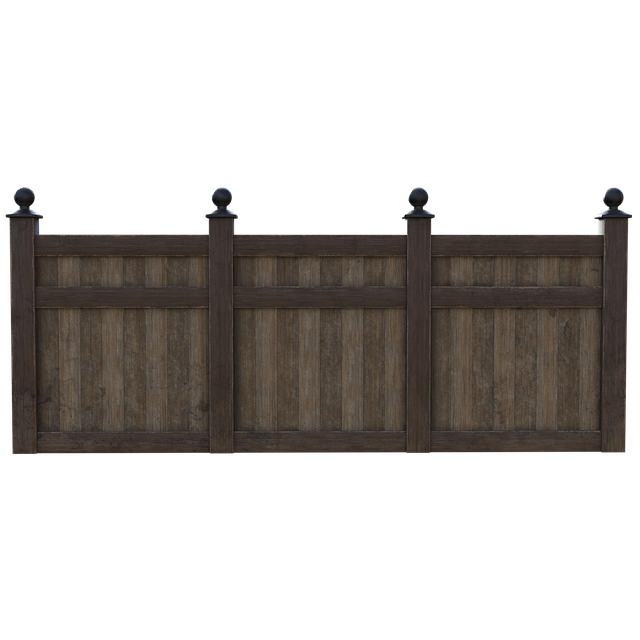Introduction:
Enhancing the beauty and longevity of your wooden fence doesn’t have to be a daunting task. This guide delves into the art of fence staining and sealing, offering a comprehensive overview for both beginners and seasoned DIY enthusiasts. From understanding the benefits and diverse types of stains to mastering preparation techniques and application tips, you’ll discover the secrets to achieving a vibrant, protective finish. Whether aiming to restore an old fence or maintain a new installation, these steps ensure your wooden barriers not only look their best but also stand the test of time.
- Understanding Fence Staining: Benefits and Types
- Preparing Your Wooden Fence for Staining and Sealing
- Choosing the Right Stain and Sealer
- Application Tips for Long-Lasting Results
Understanding Fence Staining: Benefits and Types
Fence staining is an art that enhances the beauty and longevity of your wooden fence. It involves applying a protective coating, usually a stain or sealant, to the wood’s surface. This process offers several advantages. Firstly, it shields the fence from the elements, preventing rot, fading, and cracking caused by sun exposure and moisture. Staining also adds aesthetic value, transforming an ordinary fence into a vibrant feature that complements your outdoor space.
There are various types of fence staining solutions available, each with unique characteristics. Water-based stains are popular for their low odor and quick drying time, while oil-based options provide deeper color penetration and longer-lasting protection. Some stains are designed to enhance the natural wood grain, creating a rustic appeal, while others offer vibrant colors that allow you to express your creative side. The choice depends on personal preference, the fence’s existing condition, and the desired level of protection and aesthetics.
Preparing Your Wooden Fence for Staining and Sealing
Before applying any stain or sealer, preparing your wooden fence is a crucial step in ensuring optimal results. Start by thoroughly cleaning the fence to remove any dirt, dust, or debris that might hinder adhesion. Use a pressure washer or a stiff-bristled brush and mild detergent to ensure a clean surface. This process will help the stain penetrate better and create a more even finish.
Next, inspect your fence for any damaged or rotten sections. Repair or replace these areas as needed, ensuring the wood is solid and sound. Fill in any gaps with wood putty, then sand the entire fence to create a smooth surface. This preparation not only enhances the appearance of your fence but also guarantees that the stain and sealer will bond correctly with the wood.
Choosing the Right Stain and Sealer
When it comes to fence staining and sealing, selecting the appropriate products is key to achieving a long-lasting, protective finish. The market offers a wide array of stains and sealers designed for wooden fences, each with unique characteristics. Consider your fence’s material, color preferences, and desired protection level. Water-based stains are eco-friendly and easy to clean but may not provide the same deep penetration as oil-based options. On the other hand, sealers protect against water, UV rays, and fading, ensuring your fence stays vibrant and durable.
Choosing the right combination of stain and sealer will depend on factors like climate, sun exposure, and personal aesthetics. Always read product labels and follow instructions for optimal results. Testing a small area first can help you determine the best formula, ensuring a beautiful and protective finish that complements your outdoor space.
Application Tips for Long-Lasting Results
When applying fence stain or sealant, preparation is key to achieving long-lasting results. Before starting, ensure your fence is clean and free from dirt, dust, and any loose debris. A pressure washer can be an effective tool for this initial cleaning step. This removes existing stains and prepares the wood’s surface for a fresh application.
During the staining process, maintain even pressure on the brush or roller to avoid uneven pigmentation. Work in small sections, allowing each area to dry slightly before moving on. For seals, apply thin, even coats, letting each coat cure as directed by the manufacturer. Overlapping each stroke slightly ensures complete coverage without visible brush strokes. Regular maintenance, including reapplying stain and sealant every few years, will prolong the life of your fence’s finish, protecting it from the elements.
